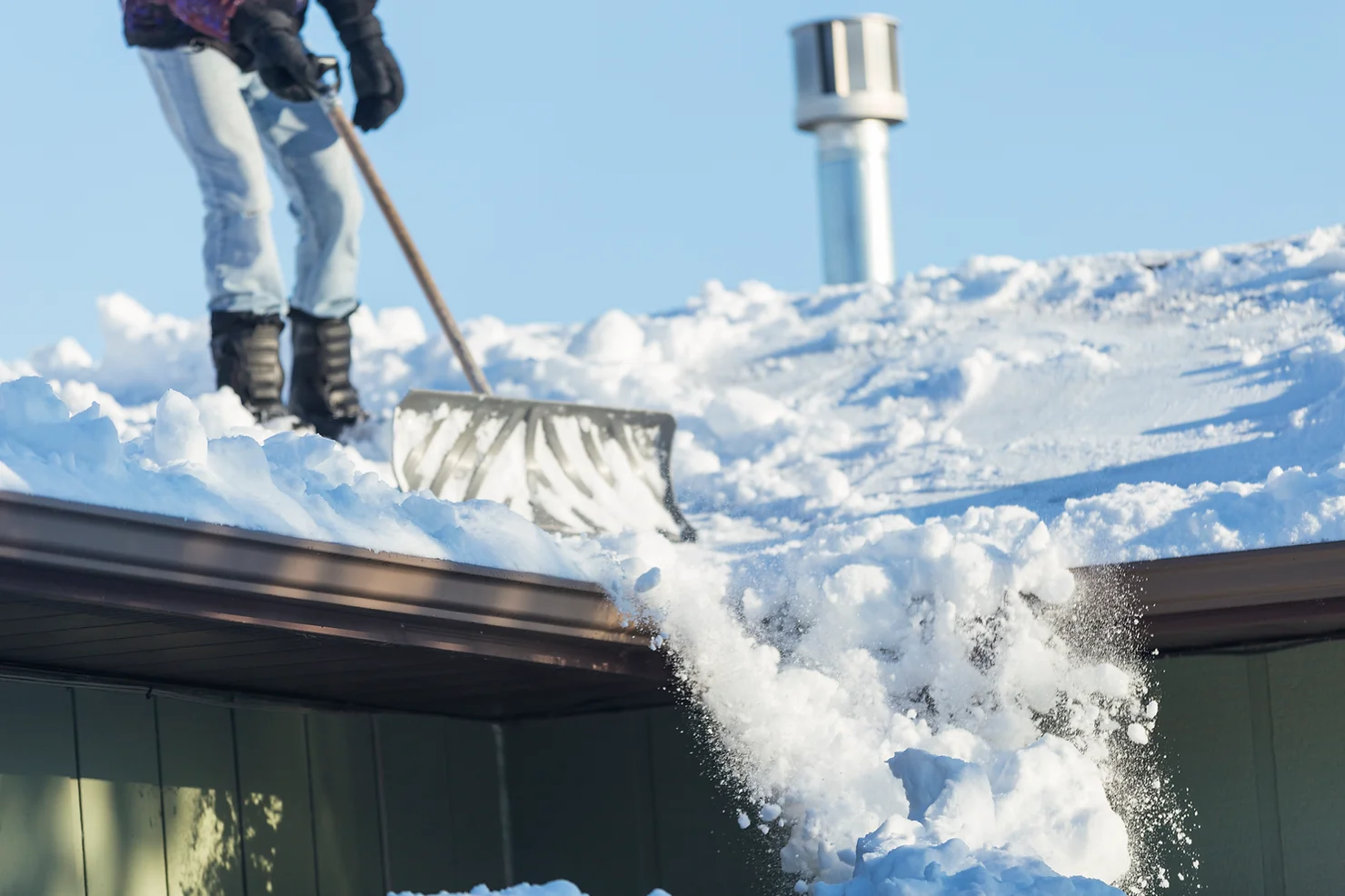
A Guide to Detecting Subtle and Serious Roof Damage Before It’s Too Late
Don't let roof damage go unnoticed. Learn the signs and prevent costly repairs. Protect your home with our expert advice …

Are you tired of dealing with ice dams on your roof every winter? If so, you've come to the right place. In this article, we will provide you with effective tips on how to prevent ice dams and protect your roof from potential damage.
Ice dams occur when heat escapes from your home and melts the snow on your roof, which then refreezes at the edges, creating a barrier that prevents proper drainage. This can result in water seeping into your home, causing interior damage and mold growth.
Ice dams typically form due to poor insulation and ventilation in your attic. When your attic is not properly insulated, the warm air from your living spaces rises and escapes through the roof. This heat then melts the snow on your roof, which refreezes along the eaves and forms ice dams.
Ice dams can cause significant damage to your home if left untreated. The weight of the ice dams can put stress on your roof, leading to potential structural damage. Additionally, as the water from melted snow backs up behind the ice dams, it can seep into your home, causing damage to your ceilings, walls, and insulation.
The moisture from the water can also create the perfect environment for mold growth. Mold not only damages your home but can also pose serious health risks to you and your family. Therefore, it is crucial to take preventive measures to avoid the formation of ice dams on your roof.
It is essential to be able to identify the signs of ice dams on your roof so that you can take action promptly. Some common signs include:
If you notice any of these signs, it is crucial to address the issue promptly to prevent further damage to your home.
To prevent ice dams, it is important to address the root causes. Proper insulation and ventilation are key, as they help to regulate the temperature on your roof and prevent melting. Additionally, keeping your gutters and downspouts clear of debris ensures that water can flow freely and minimize the risk of ice dams forming.
One of the most effective ways to prevent ice dams is by ensuring your attic is properly insulated. Insulation helps to keep the warm air inside your home, preventing it from escaping through the roof and melting the snow. Here are some tips for insulating your attic:
By properly insulating your attic, you can significantly reduce the risk of ice dams forming on your roof.

In addition to insulation, proper ventilation is essential for preventing ice dams. Ventilation helps to regulate the temperature on your roof and prevent the formation of ice dams. Consider the following ventilation options:
By ensuring proper ventilation in your attic, you can create a more balanced and controlled environment that minimizes the risk of ice dams.
Another preventive measure to consider is clearing snow from your roof after a snowfall. Removing snow can help to prevent the accumulation of ice dams. However, it is important to do so safely to avoid damaging your roof or injuring yourself. Here are some tips for snow removal:
Remember to prioritize your safety when removing snow from your roof and consult with professionals if needed.
Ice melt products can be effective in preventing the formation of ice dams. These products are typically applied to the roof to melt the snow and prevent it from refreezing along the edges. Here are some tips for using ice melt products:
Using ice melt products can be a temporary solution to prevent ice dams, but it is important to address the underlying causes for a more long-term solution.
If you're unsure about how to prevent ice dams or if you prefer to leave it to the experts, consider hiring professionals. Roofing contractors and insulation experts have the knowledge and experience to assess your roof and implement the necessary preventive measures. They can ensure that your roof is properly insulated, ventilated, and protected from ice dams.
By following these preventive measures, you can avoid the headache and expense of dealing with ice dams and protect your roof for years to come. Insulating and ventilating your attic, clearing snow from your roof, using ice melt products, and hiring professionals are all effective strategies to prevent ice dams. Remember to prioritize safety and consult with experts when needed. With these tips in mind, you can enjoy a winter season free from the troubles of ice dams. Stay proactive and protect your roof!